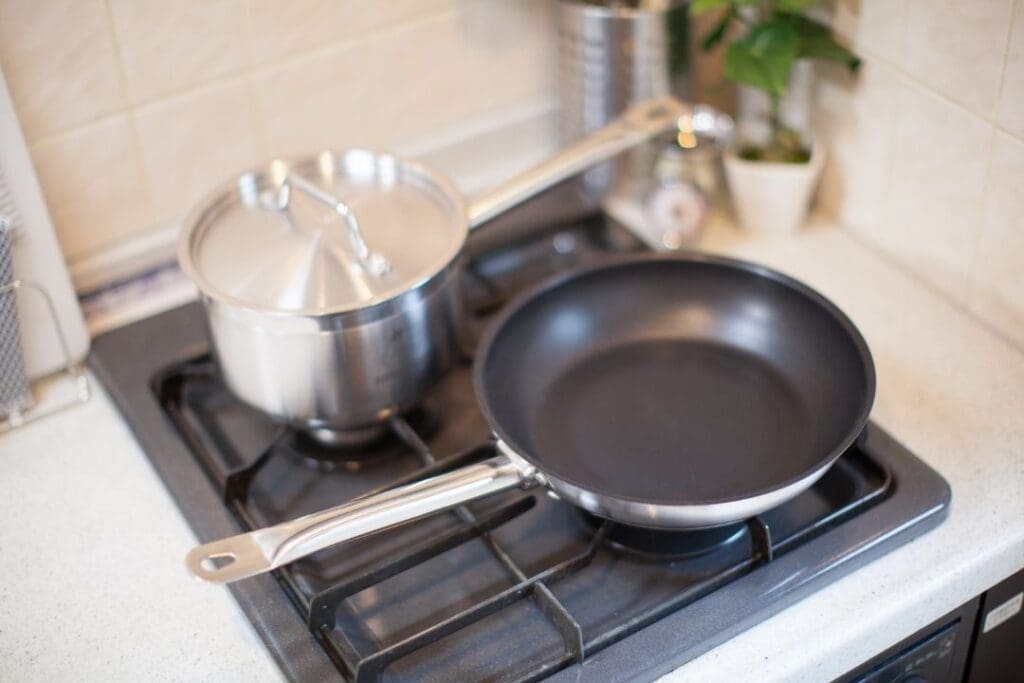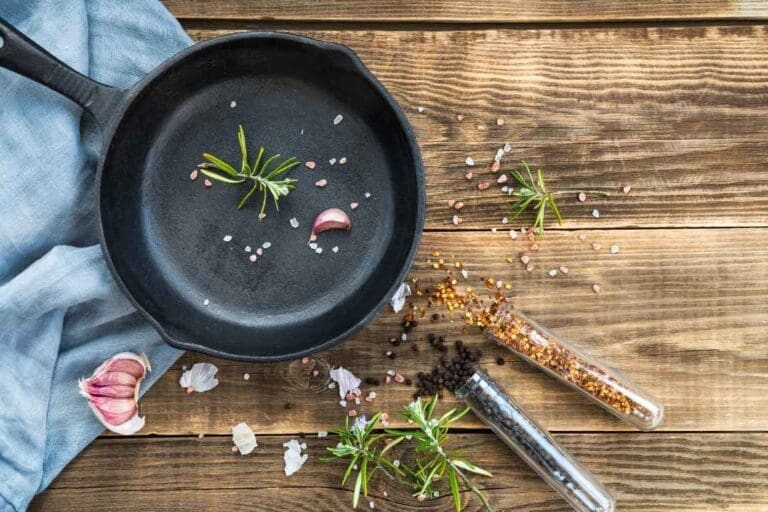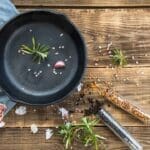Affiliate Disclosure: This post contains affiliate links. If you purchase through these links, we may earn a small commission at no additional cost to you. Thank you for supporting our blog!
Not all cookware marketed as “non-toxic” is actually safe. Many brands use buzzwords like “PFOA-free” or “eco-friendly” to sound healthier, but that doesn’t always mean they are free from harmful materials. Some nonstick coatings still contain chemicals that release toxic fumes when heated, and certain ceramic or enamel coatings can leach heavy metals into food. If you want to truly reduce toxins in your kitchen, understanding what to look for—and what to avoid—is key. Let’s break down the best and worst cookware options and how to make sure your kitchen is as safe as possible.
The Problem With Most “Non-Toxic” Cookware
The term “non-toxic” isn’t regulated, which means brands can use it even if their products still contain questionable materials. Some cookware might be free of one harmful chemical but still contain others. Here are a few common issues found in popular cookware:
- Nonstick Coatings (Even “PFOA-Free” Ones): Many brands now advertise as PFOA-free, but they often replace it with PTFE (Teflon) or other chemicals that can still degrade at high heat and release toxic fumes.
- Ceramic-Coated Cookware: While some brands are safe, low-quality ceramic cookware may contain lead or cadmium, which can leach into food over time.
- Aluminum Cookware: Aluminum is reactive, meaning it can leach into acidic foods like tomatoes, leading to long-term exposure concerns. Even anodized aluminum isn’t always foolproof.
- Enameled Cast Iron: Some enamel coatings contain lead, especially if they are imported or cheaply made. Older or vintage enamel cookware is especially risky.
The Best Non-Toxic Cookware Options
Cast Iron
Why It’s Safe:
- 100 percent natural, durable, and adds iron to food (great for those with low iron levels)
- Becomes naturally nonstick over time when properly seasoned
What to Look For:
- Most pre-seasoned cast iron cookware is coated with seed oils like soybean oil. If you want full control over your seasoning, consider stripping and re-seasoning your pan with a safer fat like avocado oil.
- If buying secondhand, strip and re-season to remove old coatings
How to Strip and Re-Season Cast Iron: If you purchase secondhand cast iron or want to remove factory-seasoned coatings, follow these steps:
- Strip the Skillet: Preheat your oven to 450°F. Place the skillet upside down in the oven and bake for 1 hour to remove the existing seasoning. Alternatively, use a steel wool pad to scrub it down to the bare iron.
- Wash and Dry: Wash the skillet thoroughly with warm water and a small amount of soap to remove any residue. Dry it completely to prevent rust.
- Re-Season the Skillet: Coat the skillet lightly with a high-smoke-point oil, such as avocado oil, tallow, or lard. Avoid vegetable or soybean oils. Place the skillet upside down in a 450°F oven for 1 hour. Allow it to cool in the oven before using.
Check out this trusted cast iron skillet on Amazon
Stainless Steel
Why It’s Safe:
- Does not leach harmful chemicals
- Extremely durable and long-lasting
What to Look For:
- Opt for 304 or 316-grade stainless steel to avoid nickel leaching
Here’s a great stainless steel cookware set on Amazon
100 Percent Pure Ceramic Cookware (Not Ceramic-Coated)
Why It’s Safe:
- No heavy metals, lead, or chemical coatings when made correctly
- Retains heat well and is naturally nonstick
What to Look For:
- Xtrema is a brand that uses pure ceramic with no added coatings
- Avoid ceramic cookware from unknown brands, as they may contain lead
Glass Cookware and Bakeware
Why It’s Safe:
- No chemicals, coatings, or leaching
- Perfect for baking, roasting, and food storage
What to Look For:
- Borosilicate glass is best for heat resistance (like Pyrex or Anchor Hocking)
- Avoid glass cookware with decorative coatings, as they may contain heavy metals
Here’s a great set of glass baking dishes on Amazon
What About Air Fryers, Slow Cookers, and Other Kitchen Appliances?
Even if you’ve upgraded your cookware, your small appliances may still be exposing you to unwanted toxins. Here’s what to watch out for:
- Air Fryers: Many have nonstick baskets with harmful coatings. Look for stainless steel or ceramic-coated options.
- Slow Cookers: Older models may have lead in the glaze. Choose a tested lead-free ceramic slow cooker.
- Instant Pots: Stainless steel inner pots are safe, but some sealing rings may contain BPA. Choose BPA-free replacements when needed.
Check out this non-toxic air fryer on Amazon
Check out this non-toxic pressure cooker/slow cooker on Amazon
Tips for Transitioning to Non-Toxic Cookware
Switching to safer cookware doesn’t have to be overwhelming. Here are some simple ways to start:
- Replace your most-used toxic cookware first. If you use a nonstick pan daily, swap it out for cast iron or stainless steel.
- Be mindful of heat levels. Even safe cookware like stainless steel can leach if scratched or overheated—stick to medium heat when possible.
- Use wooden or silicone utensils. Avoid metal utensils on nonstick coatings or enameled cookware to prevent damage.
- Consider food storage, too. Ditch plastic containers and opt for glass food storage to avoid BPA and microplastic contamination.
Here’s a great set of glass food storage containers on Amazon

Upgrade Your Cookware, Upgrade Your Health
Not all “non-toxic” cookware is truly safe. Many popular brands still use harmful materials that can leach into your food over time. Choosing cast iron, stainless steel, 100 percent ceramic, or glass cookware is the best way to ensure your kitchen is free of toxic chemicals.
Upgrading your cookware is an investment, but it’s one that directly impacts your health. Start by replacing your most-used pots and pans, and over time, transition to a safer, toxin-free kitchen.













